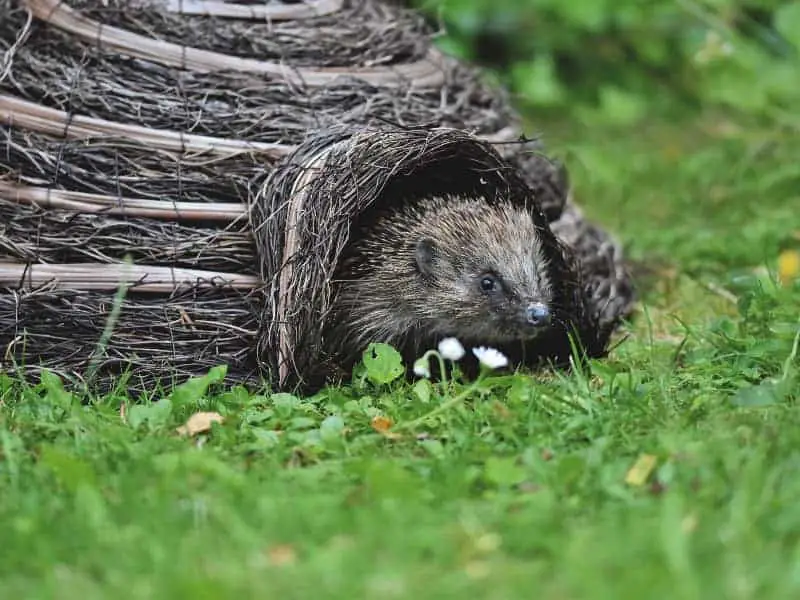
Does a hedgehog eat mealworms?
Surely it is mostly good for you to feed a free-living hedgehog. However, this is misunderstood animal love, which harms the hedgehog more than it helps. So the question "Does the hedgehog eat mealworms?" is basically already answered.
Does the hedgehog eat mealworms - what else is on his menu?
You must not feed a hedgehog, because just like humans he has to watch his body weight. The healthy hedgehog is very good at finding its own food. This consists of insects, small bugs, eggs and occasionally small birds or mice. If the hedgehog finds in our tidy Gardens no food suitable for him, then he eats snails and earthworms. However, this is not harmless for the hedgehog. Both snails and earthworms are the intermediate host of parasites such as the dangerous lungworm.
The diet of a hedgehog in the wild
The digestive tract of a hedgehog is built very simply. It consists of only one tube. Compared to the body size, the intestine is very short. The appendix is completely missing. All this severely restricts the diet. As an omnivore, the hedgehog certainly does not find mealworms in nature. The nocturnal fellow rather makes itself over these animals:
- Insects: Ground beetles, millipedes, spiders
- Larvae: butterfly caterpillars
- Mollusks: annelids, snails
Occasionally, the hedgehog will also find carrion or a vertebrate to eat. To meet its water needs, the hedgehog uses plant food sources such as fruits or roots. The hedgehog cannot eat a purely vegetarian diet. Its digestive system cannot break down plant food. It is excreted almost completely undigested.

The food spectrum in the course of the year
| Season | Living creature food | Information |
| Spring | Earthworms, millipedes, slugs, bird eggs | Precipitation drives the insects and worms from the soil to the surface |
| Summer | Beetles, slugs | Drought favors the heat-loving beetle species |
| Fall | Apple, fruit, root remnants | Insects in rotting plant parts or overripe fallen fruit |
| Winter | nothing | Ground frost and snowfall limit insect diversity |
Mealworms and the resulting consequences
If you feed the hedgehog primarily dried mealworms, this will have clear consequences for the mammal. One thing in advance, if you already feed, then mealworms only as a treat. That means no more than 10 pieces per day.
In larger quantities, a kind of malnutrition can occur. In the following weeks this leads to a severe loss of spines. This loss can go so far that the hedgehog is naked. When mealworms are digested, the chitinous carapace produces a large amount of hydrocyanic acid. This is extremely harmful to hedgehogs and can lead to death.
You can give fresh mealworms in small amounts to a young Hedgehog shortly before release give. The hedgehog will get used to live food before you release him into the wild.
Author

-
Garden animal - A life with nature
Welcome to my animal blog! My name is Dirk and I am happy to take you on my journey through the fascinating world of animals and gardening.
Born 54 years ago, I have had an insatiable curiosity for the animal world around me since childhood. Although I have moved professionally in other industries, my true passion has always been animals and nature. It is remarkable how a small garden has become such an important part of my life.
Many of my fondest memories are associated with the animals that share our home. Whether it's the curious squirrels that scurry across the trees in the morning, the colorful variety of birds that visit our feeders, or the busy bees and butterflies that pollinate our flowers, every moment with them is invaluable to me.
This blog is my contribution to share my experiences, discoveries and insights with like-minded people. Here I will share stories of unforgettable encounters with animals, give tips on gardening and creating wildlife-friendly habitats, and take you on my journeys through nature.
Thank you so much for being here!
Cordial,
Dirk aka garden animal
Last posts
- 27. February 2024PetsVeganes Hundefutter – Grün und Gesund?
- 18. January 2024ChickensOregano für Hühner
- November 27, 2023HamsterDiurnal hamsters
- November 24, 2023HamsterHamster hammock






